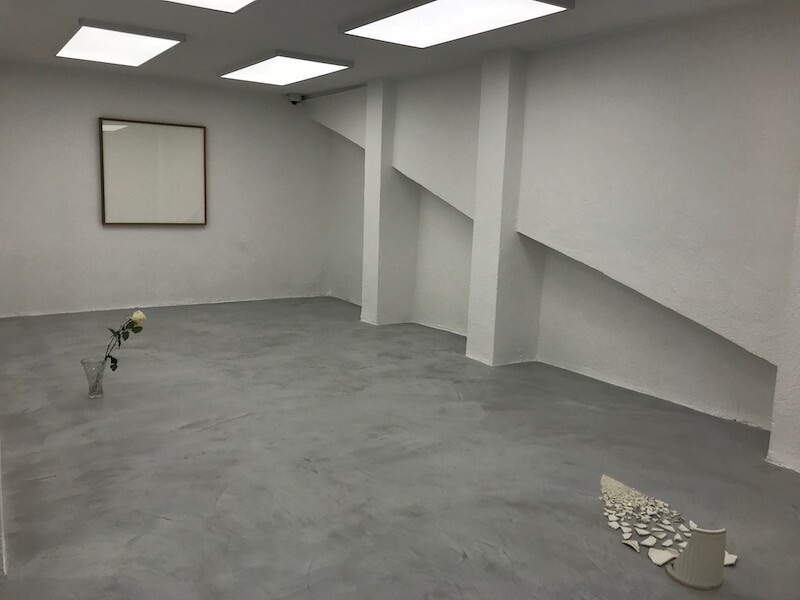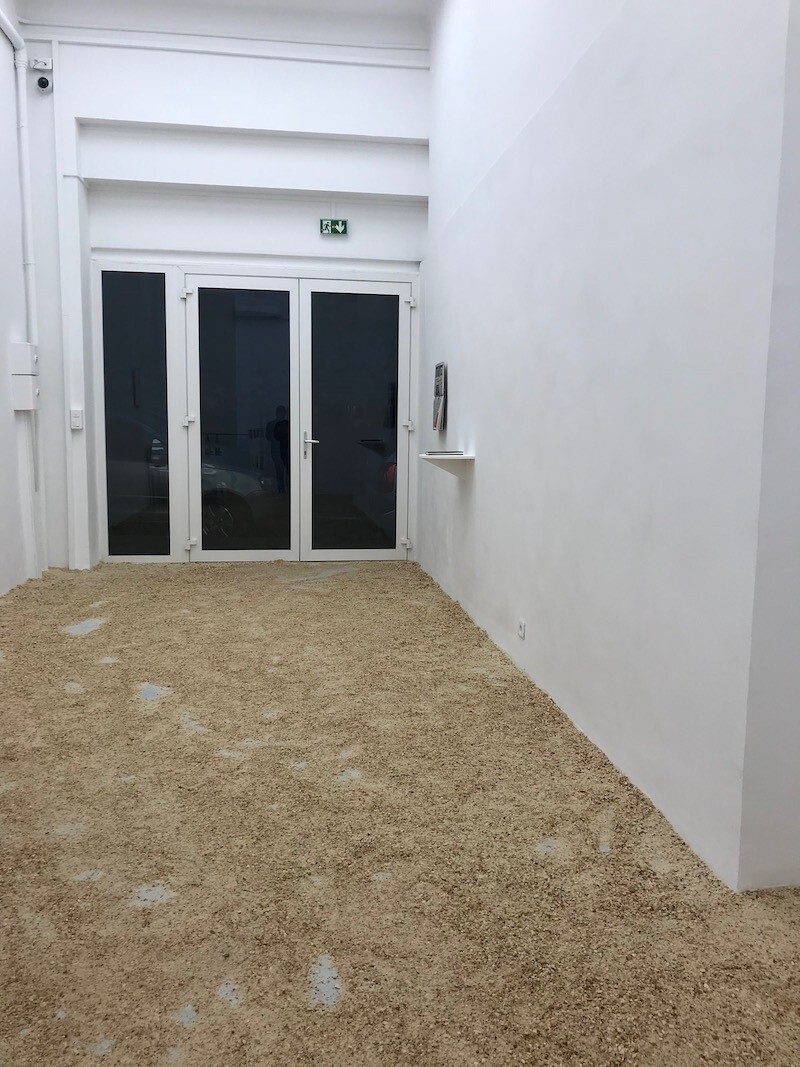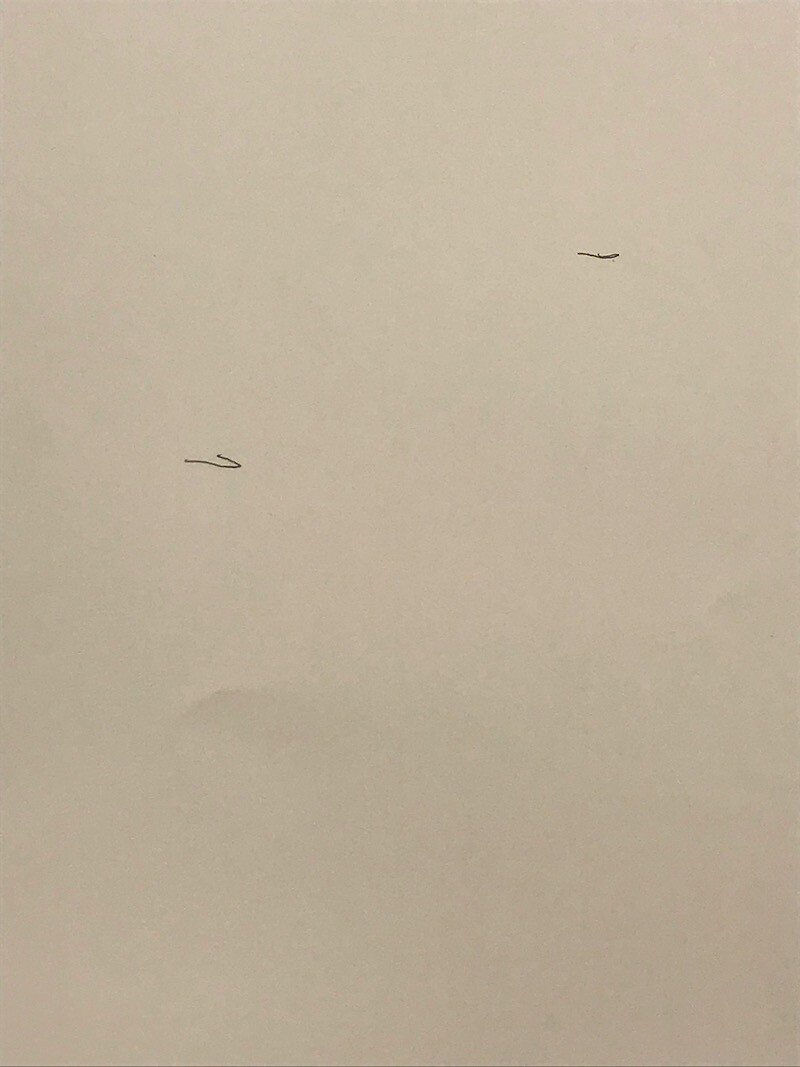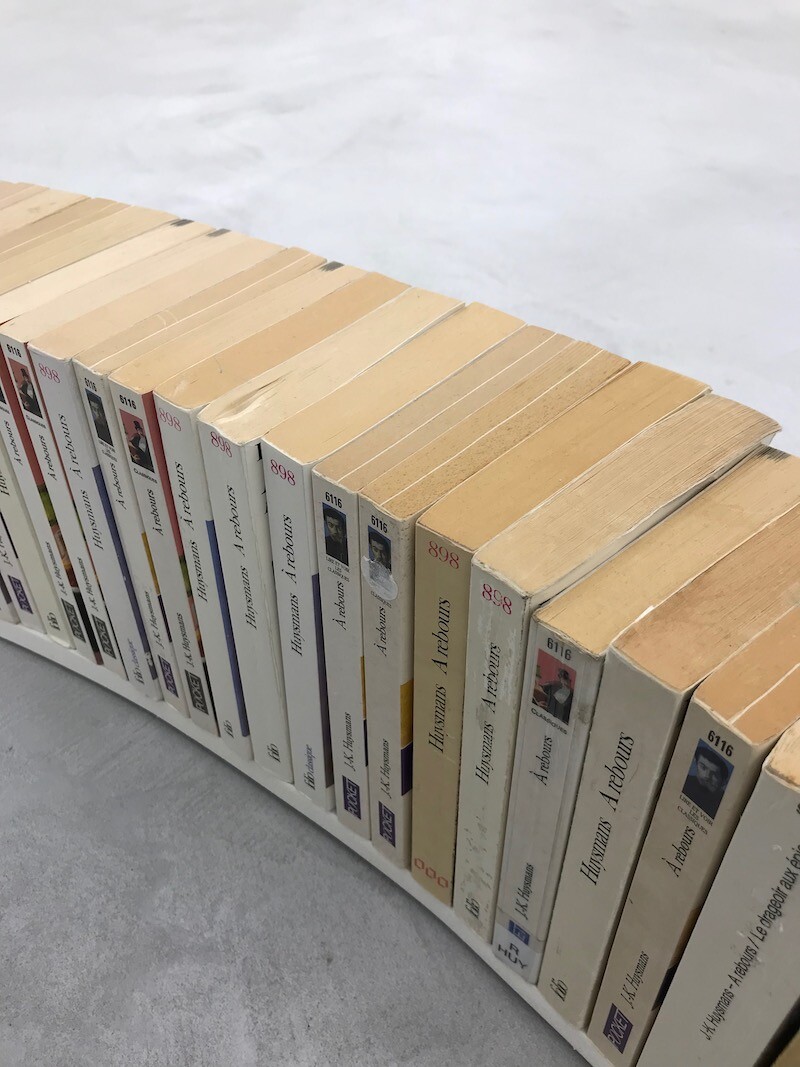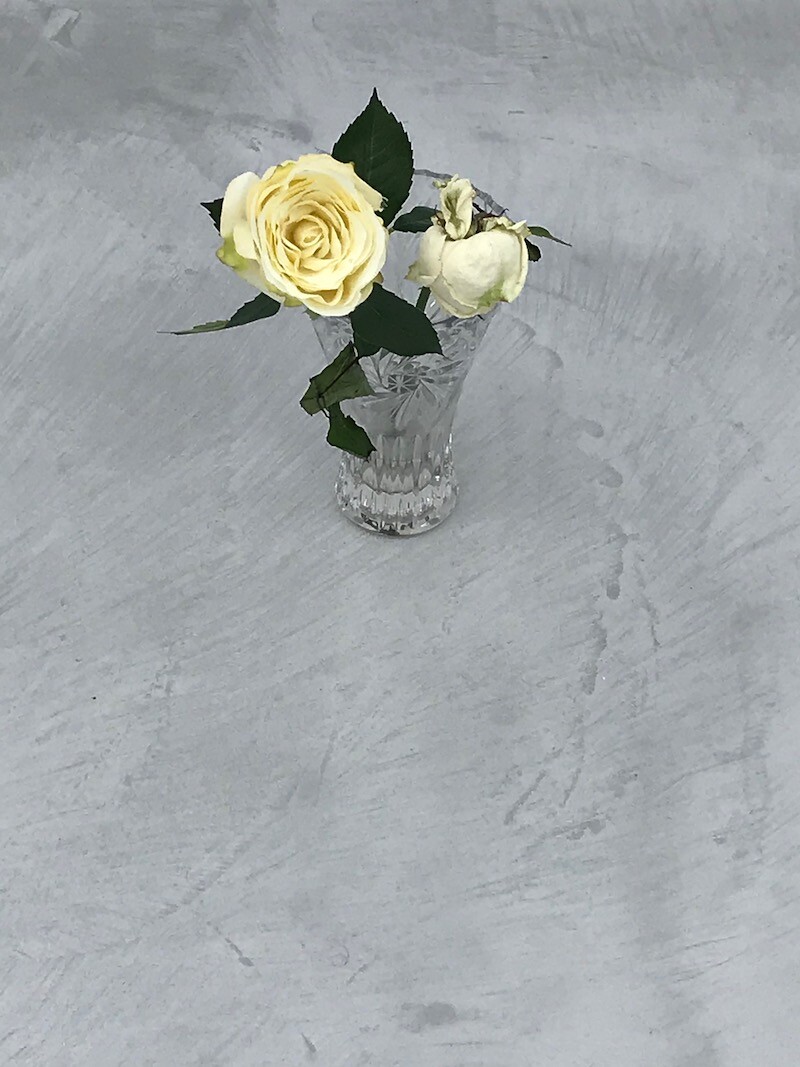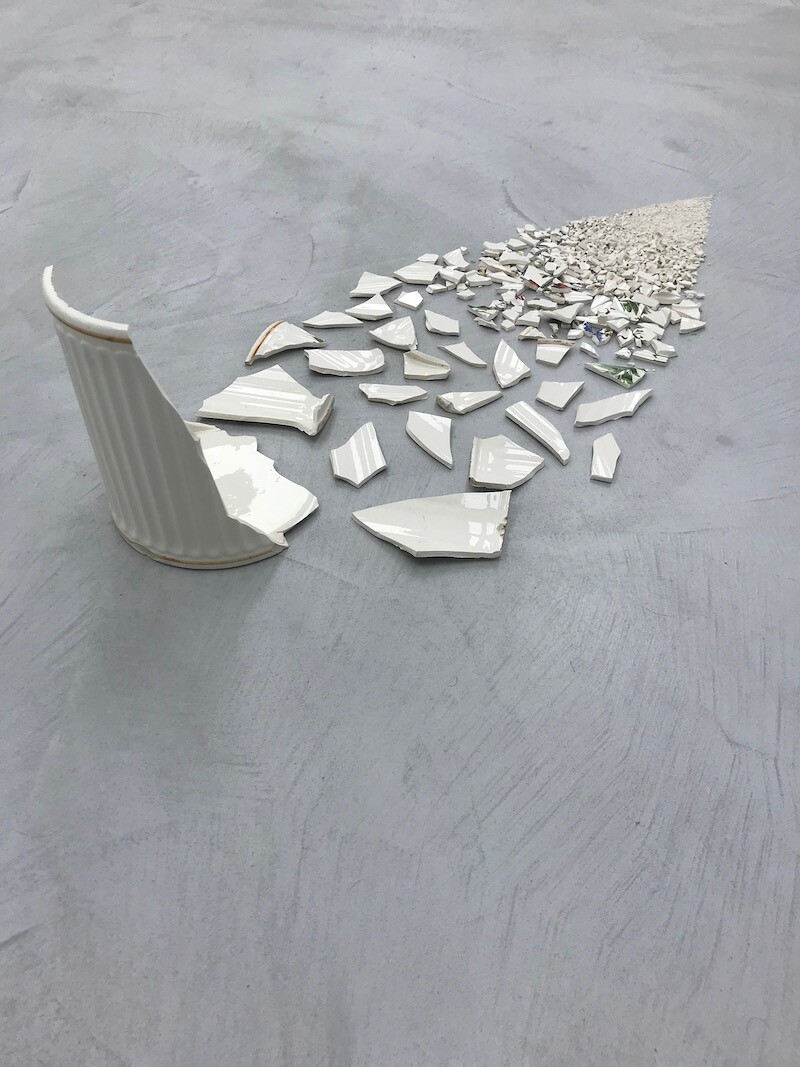A thick layer of breadcrumbs covers the floor of the upstairs room at Galerie de la Scep in Marseille. Early in the evening of the opening, there are only a handful of footsteps that show the passage of other viewers through the space. No one has yet tracked baguette particles—sourced from local bakeries over the course of several months—downstairs and into the two other rooms that comprise Stéphanie Saadé’s solo exhibition, “L’espace de 70 jours” [The space of 70 days], which is the show’s running time.
This installation, Miettes de Tradition [Crumbs of tradition] (2018–19), produces a subtle sense of estrangement. It separates the act of walking into cause and effect, denaturalizing it just enough to place me at a distance from my own movement. I walk about gingerly, aware of the crunching beneath my sneakers. I do not shift my weight from foot to foot, I conserve my steps, staying before the other objects in the room rather than walking around. I am made aware of my participation in the crumbs’ displacement and their gradual disintegration. Every time pressure is applied to the floor something irreversible happens.
Saadé refers to her work as creating a sense of “artificial nostalgia.” Her nostalgia is artificial because it attaches itself to signs—a vase, a rose, the ruins of baguettes—that aspire to conserve that which is only valuable by virtue of ephemerality. Time becomes viscous in this paradigm, full of desire for beauty and youth as signified by material things. Saadé’s objects and installations manage to capture both the acknowledgement that time has destroyed something irreplaceable and the persistent wish for this not to be case.
Because of my discomfort at being implicated in pulverization, I stand still in front of a very simple drawing: two pencil marks on a white sheet of paper, framed in light wood. Entitled Double Altitude (2017), the horizontal lines mark the height of the artist at the age of 34 and the height of the artist at the same age standing on tiptoe. One measures children in the process of transformation and marks their growth with pencil on a wall, Saadé points out to me during the opening, but not adults. It is assumed that adults have become what they are. Yet Saadé is several inches taller on tiptoe. The memory of a painstakingly recorded corporal achievement is both monumentalized and rendered arbitrary by the ease with which the artist’s height leaps upward. This tension also produces estrangement: I will never look at the marks made on the wall on which my own height is recorded the same way. Their capacity to function simply as an index has evaporated.
Downstairs, one room is dominated by a semi-circle of books affixed to a curved plank on the floor. The 66 books are editions of the same title dating from 1912 to 2016. À Rebours (2019) is the title of both Saadé’s work and the book exhibited, written by Joris-Karl Huysmans in 1884. The volumes are arranged according to how yellow their pages have become, and thus are only eccentrically chronological. Saadé explains that the biological age of each book depends on its paper quality, the toxicity of the ink used to print it, and whether it has spent its life shuffling between owners. Titled Against Nature in English, the novel centers on a single character’s withdrawal from society after a debauched fin-de-siècle Parisian life to indulge himself in extravagant solitude, both of which are described in baroque detail. Rhetorically, the book could not be further from Saadé’s minimalist conceptual gestures, yet there is an aesthetic engagement with how objects end. For example, the main character, Jean des Esseintes, encrusts the shell of his pet tortoise with precious gemstones, which eventually leads to its death. Saadé’s work Faux-Jumeaux [False Twins] (2014) consists of identical roses—one artificial and one real—placed side by side in a vase of water on the gallery floor. One wilts slowly over the course of the exhibition while the other remains pristine in its plastic youth.
The term nostalgia implies a comparison between memory tout court and some other kind of memory that is tinged with association, with longing and desire that fall outside the frame of the specific time remembered. The feeling of belonging to a place is associated with a texture of worn wood, for example, rather than to the fact that the kitchen table was made of oak. In Les Quatre Coins du Monde [The four corners of the world] (2015), Saadé produces a representation of that kind of association. The work is a blank piece of paper in an elegant, square wooden frame. Saadé has sourced each facet of the frame from a different location associated with a cardinal direction. North is represented by larch tree wood from Siberia, south by walnut wood from Dalmatia, east by oak from Slovenia, and west by pear wood from Austria. Here again, the operative mechanism is an infinitesimal displacement: These places mark the north, south, east, and west of what center? If the blankness framed by the wood is meant as a screen onto which to project an imagination of that center and of its eventual margins, is that center even imaginable from a cold night in Marseille?
